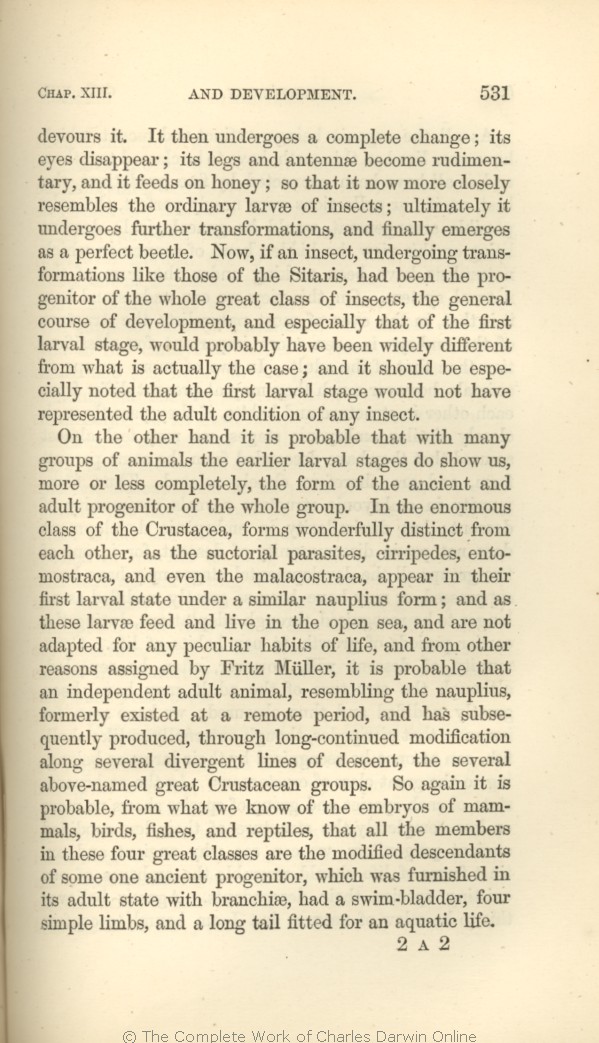devours
it.
It then | It then 1866 |
| Afterwards these larvæ 1869 |
| undergoes 1866 | | undergo 1869 |
| resembles 1866 | | resemble 1869 |
| undergoes 1866 | | undergo 1869 |
| further 1866 | | a further 1869 |
| transformations, 1866 | | transformation, 1869 |
| had been 1866 |
| were to become 1869 1872 |
| the general 1866 | | their 1869 | | the 1872 |
| development, 1866 | | develop- ment 1869 | | development 1872 |
| and especially that of the first larval stage, would probably have been 1866 |
| would probably be 1869 |
| of the new class would be 1872 |
| is actually the case; and it should be especially noted that 1866 |
| it now is; and 1869 |
| of our existing insects; and 1872 |
| would not have 1866 |
| certainly would not 1869 1872 |
| represented 1866 | | represent 1869 1872 |
| adult 1866 | | former 1869 1872 |
| insect. 1866 |
| adult and ancient insect. 1869 |
| adult and ancient form. 1872 |
|
On the other hand it is
probable | probable 1866 | | highly probable 1869 1872 |
| groups of 1866 | groups of 1869 1872 |
| earlier 1866 | | embryonic or 1869 1872 |
| form 1866 | | state 1869 | | condition 1872 |
| ancient and adult 1866 |
| OMIT 1869 1872 |
| group. 1866 |
| group in its adult condition. 1869 |
| group in its adult state. 1872 |
| enormous 1866 | | great 1869 1872 |
| as the 1866 | | namely, 1869 1872 |
| in their first larval state under a similar 1866 |
| at first as larvæ under the 1869 1872 |
| nauplius form; 1866 | | nauplius-form; 1869 1872 |
| Müller, 1866 1869 | | Müller, 1872 |
| an 1866 1869 |
| at some very remote period an 1872 |
| nauplius, 1866 1869 | | Nauplius, 1872 |
| formerly 1866 | formerly 1869 1872 |
| existed 1866 1869 | | existed, 1872 |
| at a remote period, and has 1866 |
| at some very remote period, and 1869 |
| and 1872 |
| through long-continued modification 1866 |
| OMIT 1869 1872 |
| several 1866 1869 | several 1872 |
| all the members in these four great classes 1866 |
| these animals 1869 1872 |
| simple 1866 1869 | | fin-like 1872 |
| fitted 1866 | | all fitted 1869 1872 |
|









